
Building operations company Johnson Controls (NYSE: JCI) reported revenue ahead of Wall Street’s expectations in Q1 CY2025, with sales up 1.4% year on year to $5.68 billion. On top of that, next quarter’s revenue guidance ($6.19 billion at the midpoint) was surprisingly good and 4.3% above what analysts were expecting. Its non-GAAP profit of $0.82 per share was 2.6% above analysts’ consensus estimates.
Is now the time to buy Johnson Controls? Find out by accessing our full research report, it’s free.
Johnson Controls (JCI) Q1 CY2025 Highlights:
- Revenue: $5.68 billion vs analyst estimates of $5.64 billion (1.4% year-on-year growth, 0.7% beat)
- Adjusted EPS: $0.82 vs analyst estimates of $0.80 (2.6% beat)
- Adjusted EBITDA: $3.78 billion vs analyst estimates of $878.6 million (66.6% margin, significant beat)
- Revenue Guidance for Q2 CY2025 is $6.19 billion at the midpoint, above analyst estimates of $5.94 billion
- Management reiterated its full-year Adjusted EPS guidance of $3.55 at the midpoint
- Operating Margin: 11.3%, up from -6.8% in the same quarter last year
- Free Cash Flow was $456 million, up from -$336 million in the same quarter last year
- Organic Revenue rose 7% year on year (1.1% in the same quarter last year)
- Market Capitalization: $58.63 billion
Company Overview
Founded after patenting the electric room thermostat, Johnson Controls (NYSE: JCI) specializes in building products and technology solutions, including HVAC systems, fire and security systems, and energy storage.
Sales Growth
Examining a company’s long-term performance can provide clues about its quality. Any business can experience short-term success, but top-performing ones enjoy sustained growth for years. Unfortunately, Johnson Controls struggled to consistently increase demand as its $23.25 billion of sales for the trailing 12 months was close to its revenue five years ago. This was below our standards and suggests it’s a low quality business.
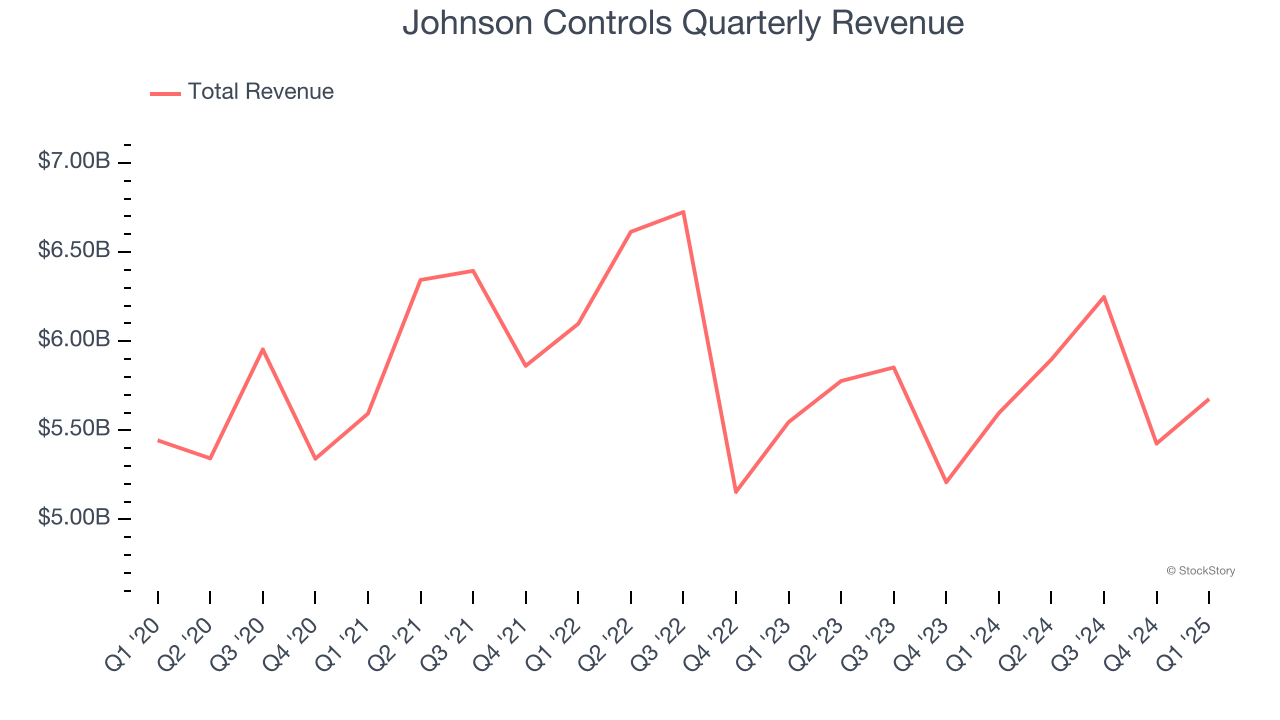
Long-term growth is the most important, but within industrials, a half-decade historical view may miss new industry trends or demand cycles. Johnson Controls’s recent performance shows its demand remained suppressed as its revenue has declined by 1.7% annually over the last two years. 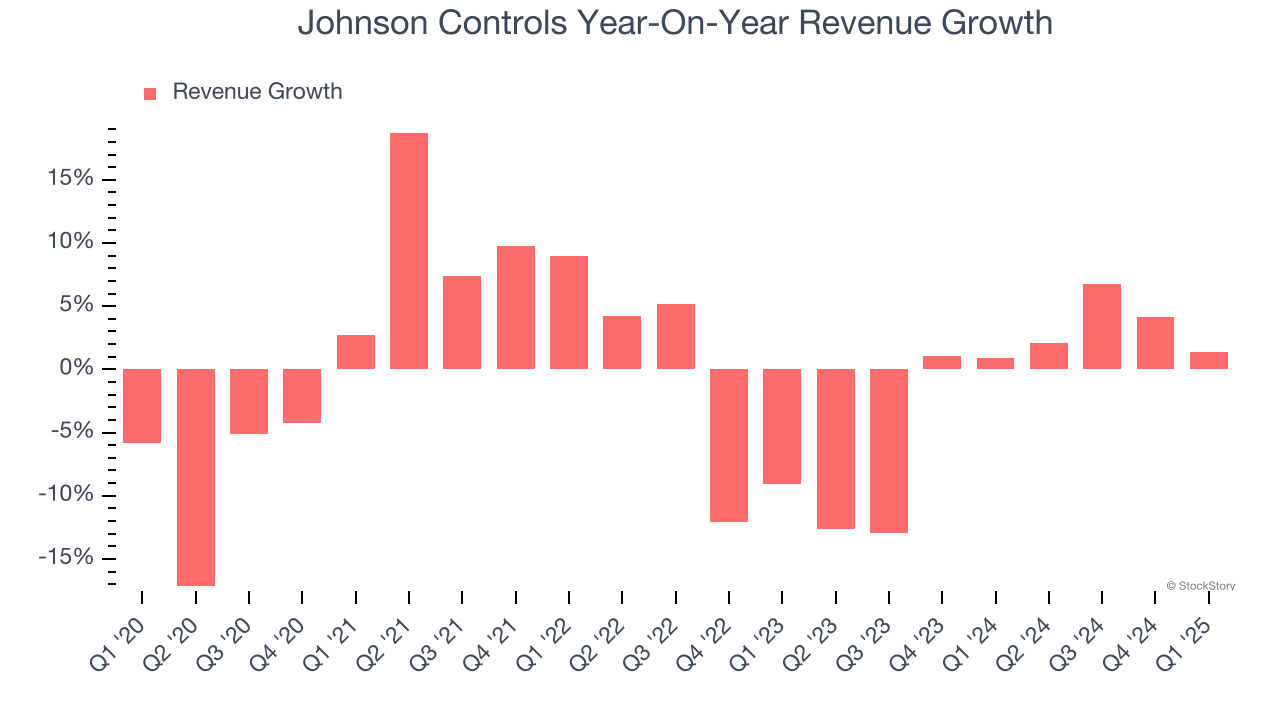
We can better understand the company’s sales dynamics by analyzing its organic revenue, which strips out one-time events like acquisitions and currency fluctuations that don’t accurately reflect its fundamentals. Over the last two years, Johnson Controls’s organic revenue averaged 5.2% year-on-year growth. Because this number is better than its normal revenue growth, we can see that some mixture of divestitures and foreign exchange rates dampened its headline results. 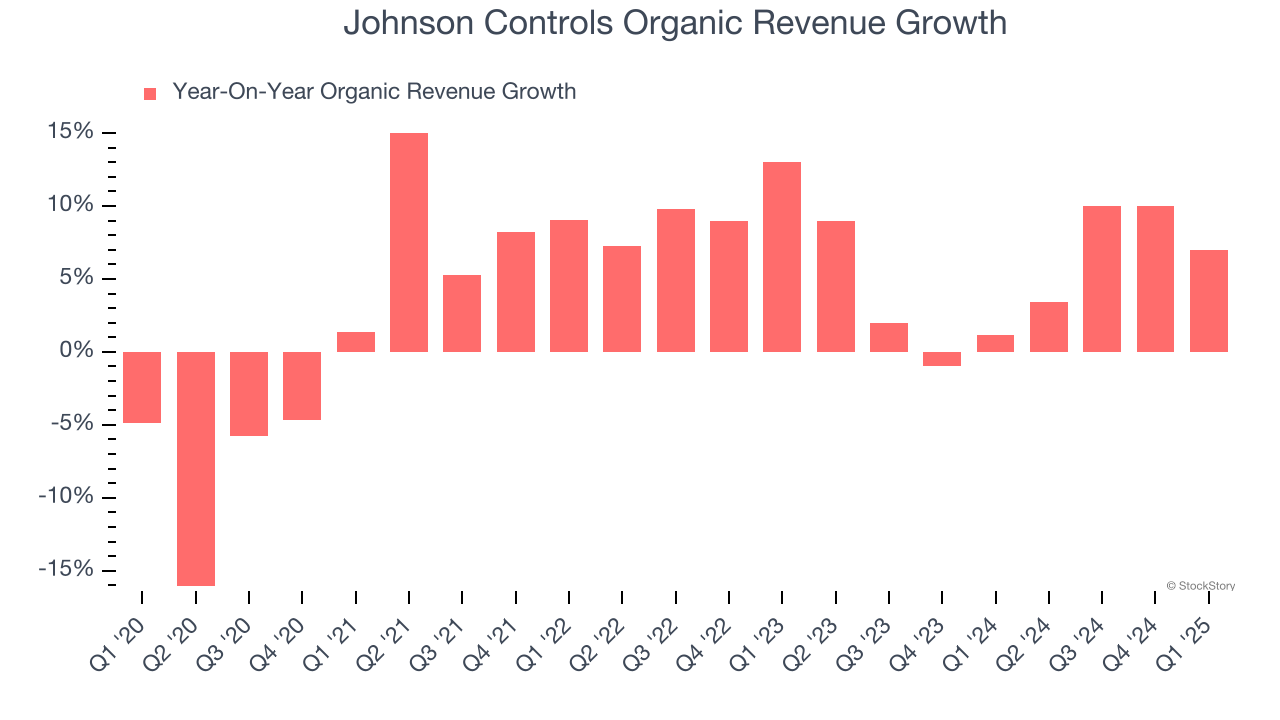
This quarter, Johnson Controls reported modest year-on-year revenue growth of 1.4% but beat Wall Street’s estimates by 0.7%. Company management is currently guiding for a 5% year-on-year increase in sales next quarter.
Looking further ahead, sell-side analysts expect revenue to grow 2.5% over the next 12 months. Although this projection implies its newer products and services will spur better top-line performance, it is still below the sector average.
Software is eating the world and there is virtually no industry left that has been untouched by it. That drives increasing demand for tools helping software developers do their jobs, whether it be monitoring critical cloud infrastructure, integrating audio and video functionality, or ensuring smooth content streaming. Click here to access a free report on our 3 favorite stocks to play this generational megatrend.
Operating Margin
Operating margin is an important measure of profitability as it shows the portion of revenue left after accounting for all core expenses – everything from the cost of goods sold to advertising and wages. It’s also useful for comparing profitability across companies with different levels of debt and tax rates because it excludes interest and taxes.
Johnson Controls has done a decent job managing its cost base over the last five years. The company has produced an average operating margin of 8.3%, higher than the broader industrials sector.
Analyzing the trend in its profitability, Johnson Controls’s operating margin rose by 5.3 percentage points over the last five years, showing its efficiency has meaningfully improved.
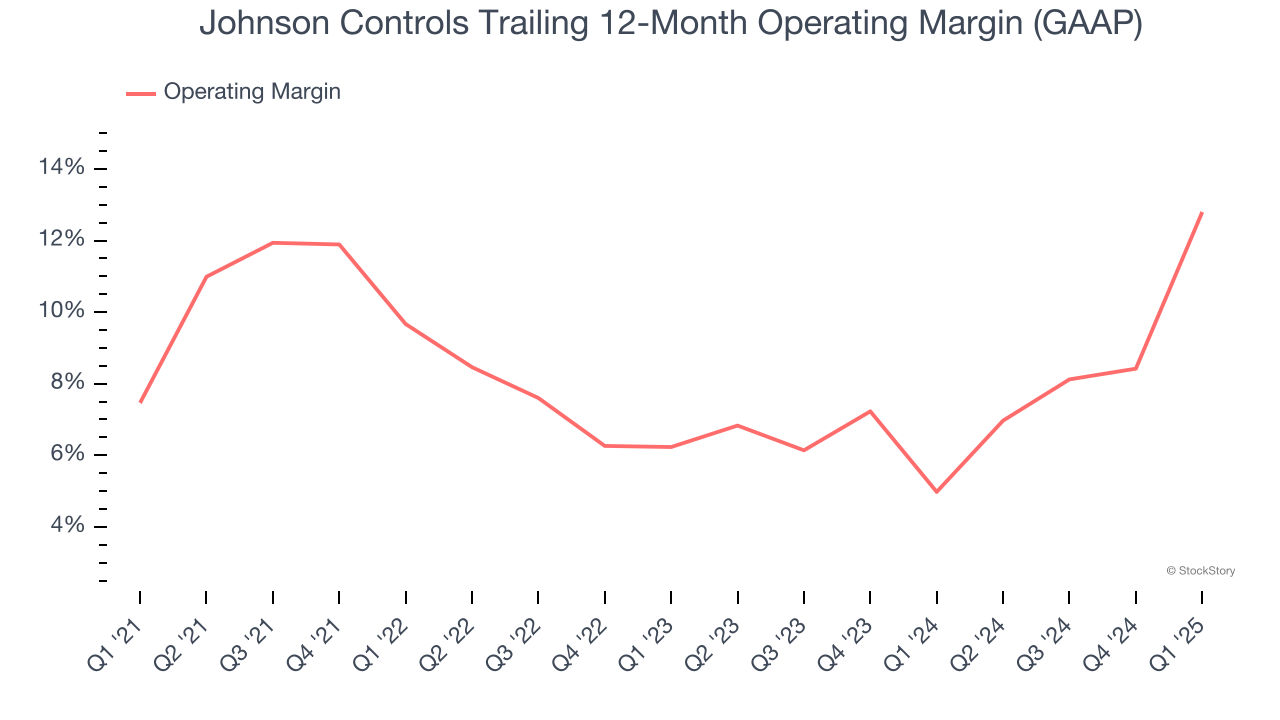
This quarter, Johnson Controls generated an operating profit margin of 11.3%, up 18.1 percentage points year on year. The increase was solid, and because its operating margin rose more than its gross margin, we can infer it was more efficient with expenses such as marketing, R&D, and administrative overhead.
Earnings Per Share
Revenue trends explain a company’s historical growth, but the long-term change in earnings per share (EPS) points to the profitability of that growth – for example, a company could inflate its sales through excessive spending on advertising and promotions.
Johnson Controls’s EPS grew at a decent 9.5% compounded annual growth rate over the last five years, higher than its flat revenue. This tells us management responded to softer demand by adapting its cost structure.
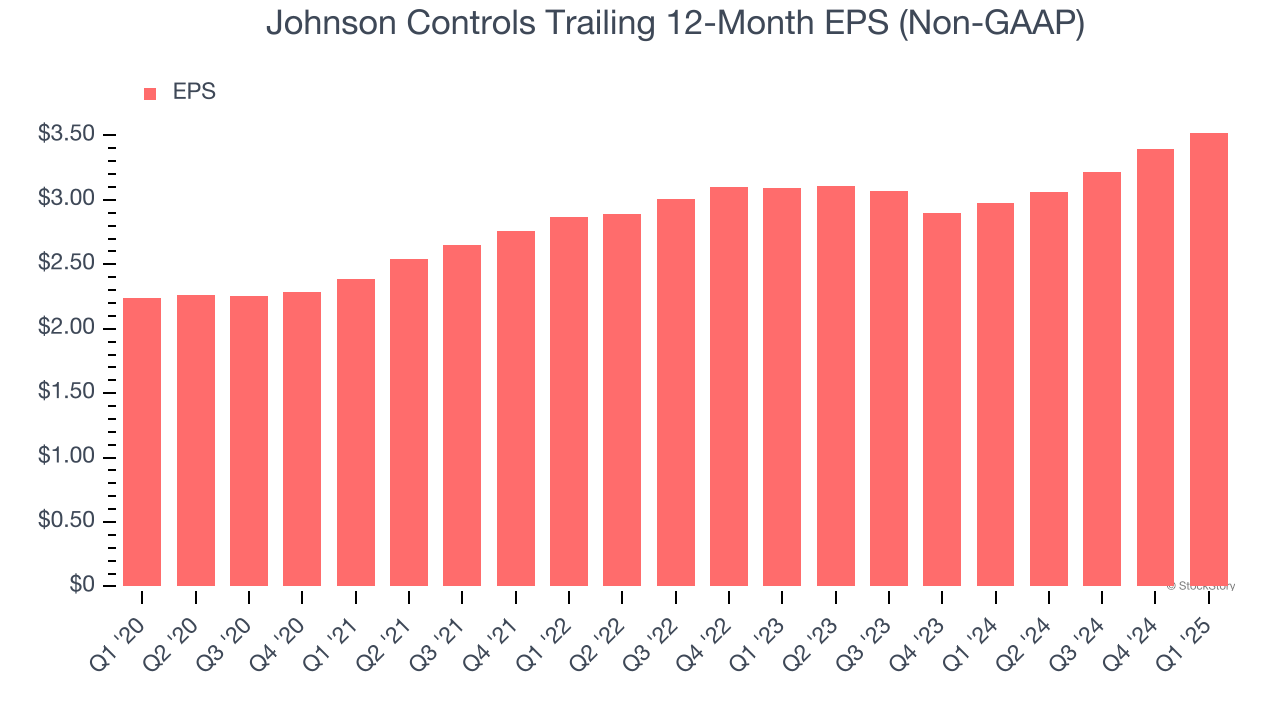
Diving into Johnson Controls’s quality of earnings can give us a better understanding of its performance. As we mentioned earlier, Johnson Controls’s operating margin expanded by 5.3 percentage points over the last five years. On top of that, its share count shrank by 12.7%. These are positive signs for shareholders because improving profitability and share buybacks turbocharge EPS growth relative to revenue growth. 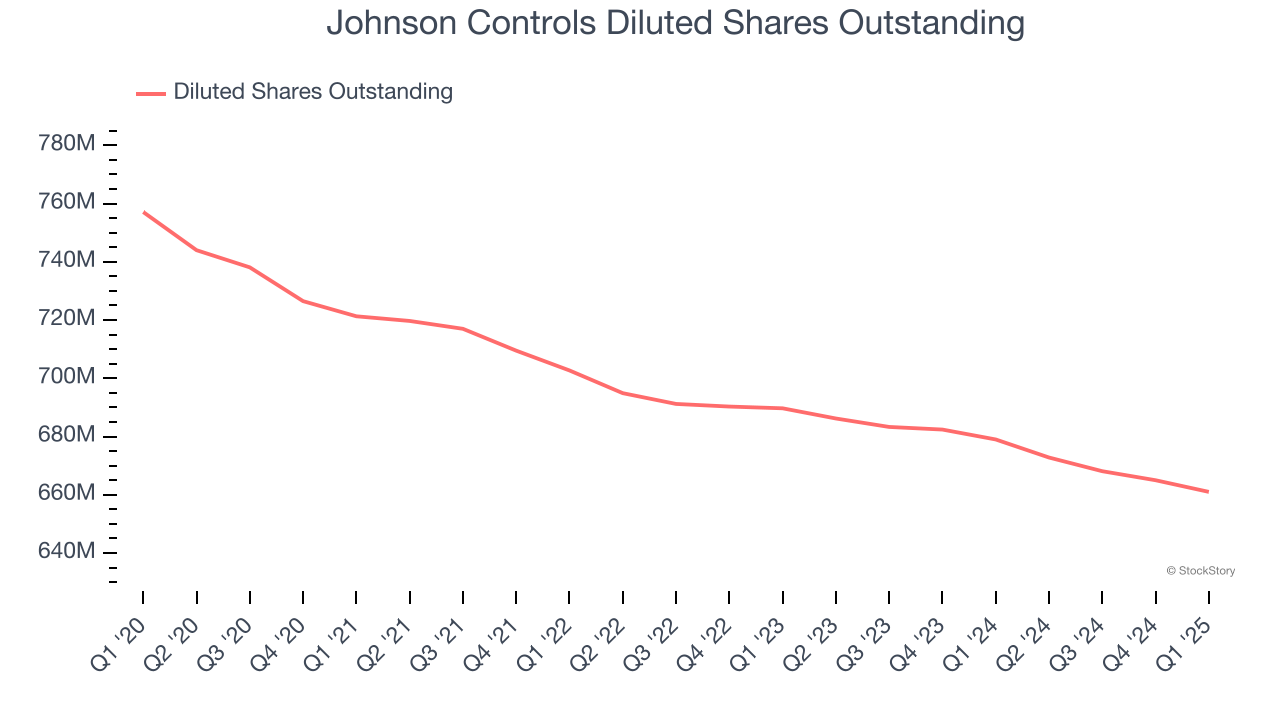
Like with revenue, we analyze EPS over a shorter period to see if we are missing a change in the business.
For Johnson Controls, its two-year annual EPS growth of 6.7% was lower than its five-year trend. We hope its growth can accelerate in the future.
In Q1, Johnson Controls reported EPS at $0.82, up from $0.69 in the same quarter last year. This print beat analysts’ estimates by 2.6%. Over the next 12 months, Wall Street expects Johnson Controls’s full-year EPS of $3.52 to grow 9.4%.
Key Takeaways from Johnson Controls’s Q1 Results
We were impressed by how Johnson Controls beat analysts’ revenue, EPS, and EBITDA expectations this quarter. We were also glad its revenue guidance for next quarter exceeded Wall Street’s estimates. On the other hand, its EPS guidance for next quarter missed. Overall, we think this was still a solid quarter with some key areas of upside. The market seemed to be hoping for more, and the stock traded down 1.7% to $87.25 immediately following the results.
Is Johnson Controls an attractive investment opportunity at the current price? The latest quarter does matter, but not nearly as much as longer-term fundamentals and valuation, when deciding if the stock is a buy. We cover that in our actionable full research report which you can read here, it’s free.


















